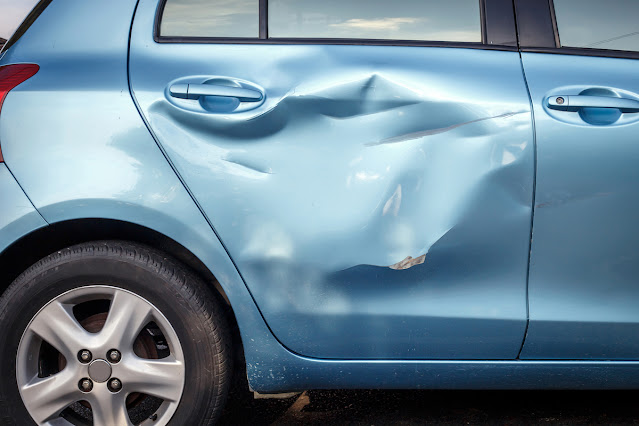Walking up to your car and seeing a ding or dent in the bodywork is not a good feeling - not only is it ugly to look at, but this type of damage can also bring down your Orlando Toyota's resale value. Dings and dents are, unfortunately, a part of day-to-day driving. Toyota of Orlando's body shop experts are here to explain the difference between dings and dents, and what to do about both.
Car dents: What they are
Car dents are the more serious of the two types of damage. They usually result from accidents and collisions, whether it be with another vehicle or a building, light pole, etc. Dents cover more surface area than dings and usually require metalwork and paintwork to fix them. There are multiple types of car dents (round, sharp, creased, etc.) and they're more expensive to repair than dings; not only that, they're much more visible to the naked eye.
Car dings: What you should know
Dings, on the other hand, are the more minor of the two. They're usually minor indentations in your car's body that don't penetrate the paint or expose the metal beneath the paint. They're usually smaller than a half-inch in diameter and don't mess up your car's paint. Dings usually result from things like a rock flying up and hitting the car, a rogue shopping cart, or other minor collisions. They're cheaper to repair than dents and don't require metalwork, and usually don't require paintwork, either.
Car dents and dings can happen for a number of reasons, as discussed - weather (hail), collisions with other vehicles, rocks, debris, etc. can all damage the paint on your Orlando Toyota and leave you with dents and dings. So what should you do about them?
Should you try DIY repair for car dents and dings?
You can attempt DIY repair when it comes to car dents and dings - notice how we said attempt. The bigger or more extensive the dent or ding, the more difficult it's going to be to fix... and the higher the risk that you mess up your car's paint or metalwork by accident. YOu could end up having to pay more to fix your mistakes than if you had just had the ding or dent fixed initially, so save yourself the time and money (and headache) and get professional auto repairs for car dents and dings, like at our Orlando Toyota body shop.
At Toyota of Orlando, we can get rid of car dents and dings with ease. Not only do we have a trained Toyota team on staff to get your car back into like-new condition, but we offer paintless dent repair and also use Genuine Toyota Parts on all of our repairs and fixes to keep your Toyota a Toyota.
Have questions about car dents and dings and how to get rid of them? Call Toyota of Orlando today! We're open and waiting at (407) 298-0001 and we're conveniently located just off I-4 near the Millenia Mall at 3575 Vineland Road.


